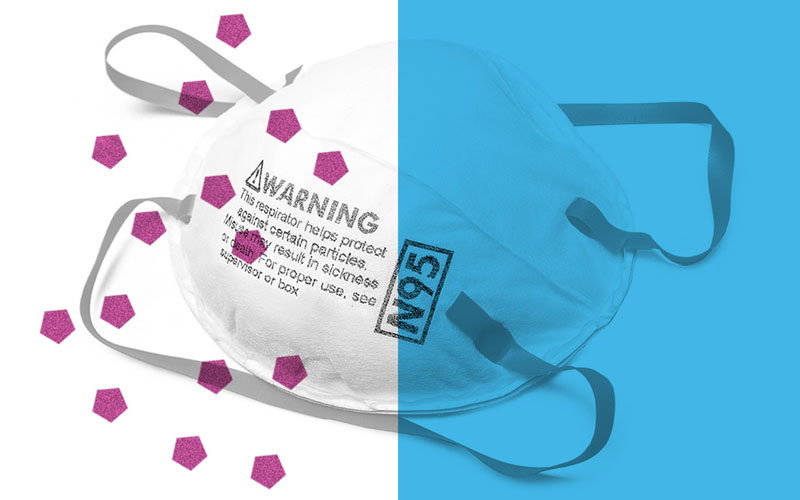Otolaryngology care during the COVID-19 pandemic

With the rapid spread of COVID-19, health care institutions around the globe have quickly revised their standard practices and policies to address the crisis. Protecting clinicians from infection is more critical than ever, particularly in high-risk fields such as otolaryngology. Yet the lack of clear guidelines and shortages of testing materials and personal protective equipment (PPE) have put clinician safety at risk.
Reza Rahbar, DMD, MD, and leaders of six major pediatric otolaryngology societies around the world set out to gather and summarize how otolaryngology practices have adapted to the current crisis. In less than five days, 306 health care institutions responded to the IPOG (International Pediatric Otolaryngology Group) survey, demonstrating an unprecedented level of urgency and collaboration within the medical community. Erika Mercier, MD, clinical fellow, and otolaryngology research assistant Natasha Dombrowski helped analyze the data and prepare the report.
The resulting report, available online, provides institutions some perspective on how to adapt their current approaches as they deal with the pandemic. Although compiled with otolaryngologists in mind, many of the report’s recommendations are relevant to a broad group of specialists.
Screen all patients for possible COVID-19 infection
Until widespread testing is available, many institutions have adopted screening strategies to identify patients with possible COVID-19 infection. Before patients arrive at their facilities, providers conduct preliminary screenings by phone or videoconference. When patients arrive for care, the report recommends a second screening and taking of vitals to determine potential risk. Patients with known or suspected infection should receive care in a separate area and clinicians should wear appropriate PPE while caring for these patients.
Provide hands-on care only for urgent and time-sensitive needs
In clinics, surgical departments, and at the bedside, health care providers are limiting procedures to patients with urgent or time-sensitive needs. Institutions have canceled elective and non-urgent procedures to minimize possible COVID-19 exposures and preserve their supplies of PPE. When possible, clinicians should provide care or consultation for non-urgent cases via videoconferencing.
Minimize clinician exposure in the hospital and surgical wards
Particularly when performing high-risk procedures, institutions have taken steps to limit the number of clinicians in the room to only those who are essential to the procedure. Many use video tools rather than direct vision for procedures such as laryngoscopies to further reduce potential exposures.
In the absence of testing, assume COVID-19 infection
When a provider cannot confirm a patient’s COVID-19 status and the patient urgently needs care, many institutions recommend handling the patient as if they are COVID-19 positive. In such cases, health care workers should don appropriate PPE and minimize direct interactions with the patient. Some hospitals, including Boston Children’s, have set up videoconferencing in patient rooms, which allows clinicians to interact with high-risk inpatients while also reducing their risk of exposure.
Conserve PPE
Now more than ever, clinicians should routinely use PPE for all at-risk procedures. However, the current shortage of PPE supplies has required many institutions to implement conservation strategies. The report recommends grouping patients who need aerosol-generating procedures, making it possible for a clinician to use a single N95 respirator for several patients before discarding it.
Practice proper PPE donning and doffing
The Department of Anesthesiology, Critical Care, and Pain Medicine at Boston Children’s has released two PPE management videos to help providers minimize the risk of COVID-19 infection.
Related:
Online ventilator training addresses COVID-19 clinician shortage
Hydroxychloroquine and COVID-19: What we know so far
Get more answers about Boston Children’s response to COVID-19 and the Department of Otolaryngology and Communication Enhancement.
Related Posts :
-

Mark’s winning pass with cochlear implants
Mark Bradshaw wanted to break out of his parents’ protective shell — as many teens do when they start pushing for ...
-

No limitations: How Flora found answers for MOG antibody disease
Flora Ringler’s fifth birthday didn’t turn out as she had hoped. She and her family were vacationing in ...
-

What orthopedic trauma surgeons wish more parents knew about lawnmower injuries
Summer is full of delights: lemonade, ice cream, and fresh-cut grass to name a few. Unfortunately, the warmer months can ...
-

Partnering diet and intestinal microbes to protect against GI disease
Despite being an everyday necessity, nutrition is something of a black box. We know that many plant-based foods are good ...





